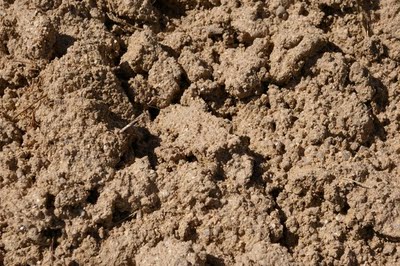Some thoughts on terroir: different expressions of Touriga Nacional
 Regular readers will know that I'm really interested by the way that different soils influence the flavour of wine. It's usually referred to as 'terroir', but there's more to terroir than just soils. Climate also plays a big role.
Regular readers will know that I'm really interested by the way that different soils influence the flavour of wine. It's usually referred to as 'terroir', but there's more to terroir than just soils. Climate also plays a big role. Portugal has a great demonstration of terroir in action. Consider the different expressions of Touriga Nacional in the Dao and the Douro regions. Yes, the climates are a little different (Douro is warmer and drier), but one of the chief differences is the soils.
Pictured above is a typical Dao soil type: sandy granite. Below we have the signature soil of the Douro: schist. Both are good vineyard soils in that they limit vigour and are free draining, but Touriga is quite different when grown on each.
Both are fantastic. I think Douro Touriga is usually best as part of a blend, though. Dao Touriga is also usually blended, but I think it can stand up on its own as a single variety. Still, generally speaking, Touriga is a fantastic blend component, and that's the way it is most effectively used.
Labels: Portugal, terroir, touriga nacional


3 Comments:
Your comparison of soil types is interesting. I’ve always assumed that climate played the largest part since I associate hot and dry conditions with dense, concentrated wines, whereas a cooler and moister climate tends to produce bright, fresh, aromatic wines. Surprisingly, the northern Douro is supposed to be the hottest and driest region in Portugal, even more so than Alentejo in the south (of course it all boils down to exactly which vineyard you’re talking about). I wonder if the effects of schist vs. granite sand hold true with other varietals or in other regions.
While I second your description of Touriga in the two regions, I think it has less to do with soils, and more with climate. Like you say, there's more to terroir than just soils. Climate also plays a big role.
Dão has a fairly Atlantic climate with lots of rainfall and due to that, you could say all its red wines are brighter, fresher and more aromatic, with distinctive floral/violet aromas than in Douro. It has less to do with the grape variety. That's also why there's a strong tradition of blends in this region.
To really demonstrate the influence of terroir on a wine style it's best to take as many variable out of the equation as possible. So perhaps sandy granite versus sandy clay within Dão itself.
Thanks both for your valuable points.
I've seen the effect of sand before in the Barossa, where there are some more sandy soils near bethany, and the wines taste quite different - lighter and more fruity.
but it would be nice to have some more comparisons, and to be able to link soils with flavours
Post a Comment
Links to this post:
Create a Link
<< Home